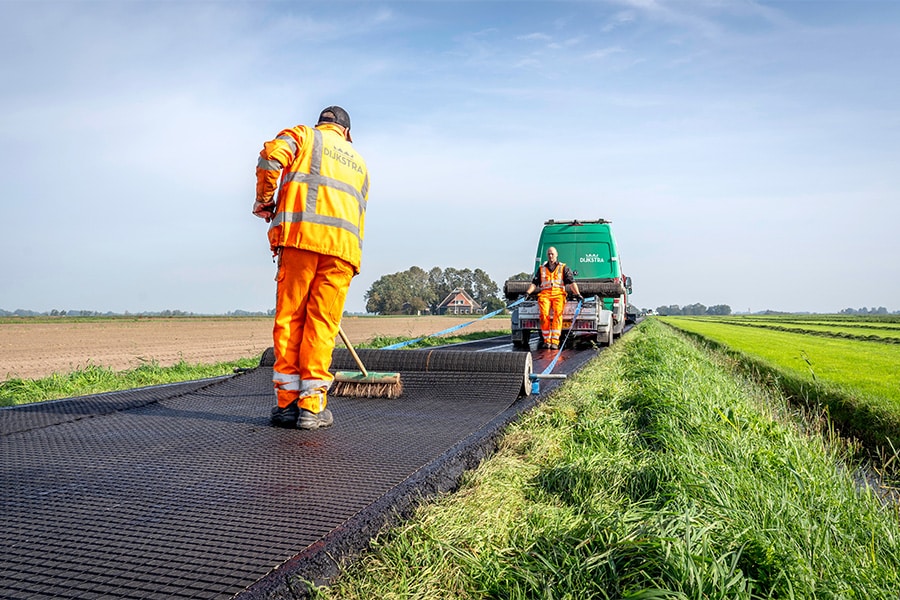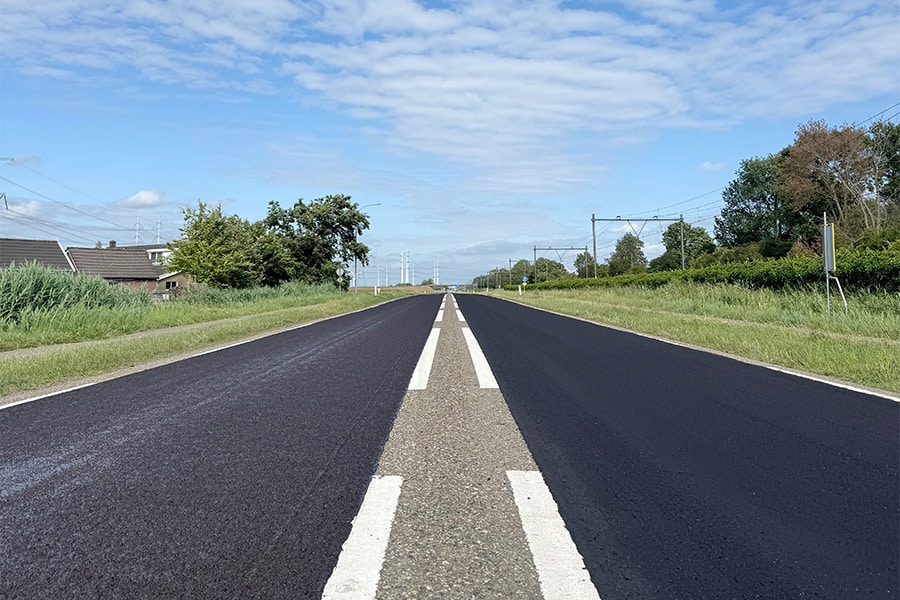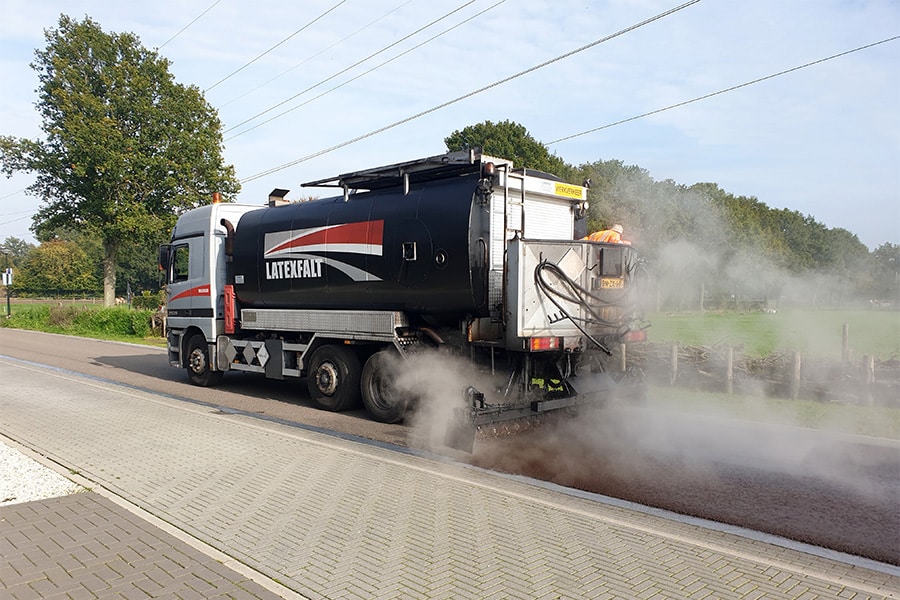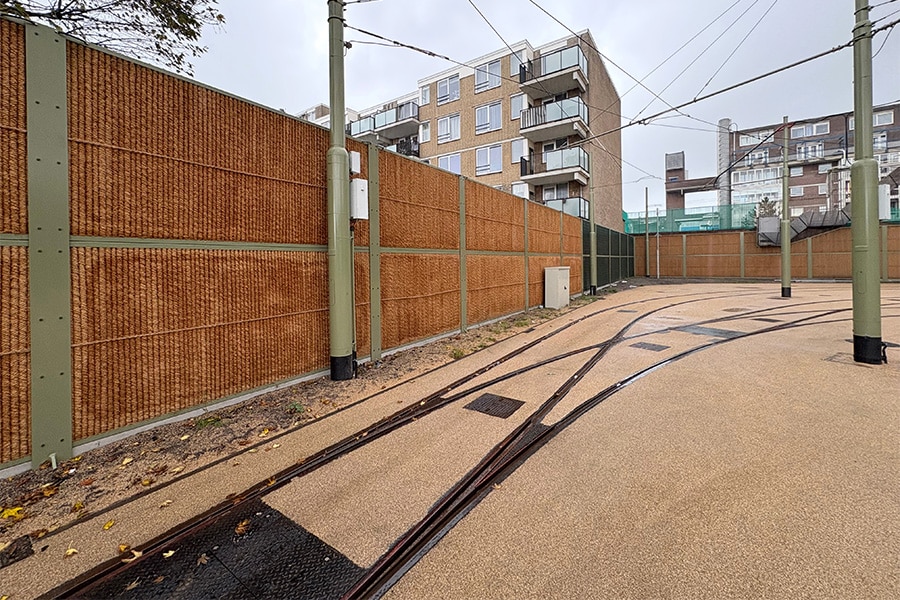
Asphalt reinforcement made from recycled Dutch PET bottles
Asphalt reinforcement is an effective method of extending the service life of asphalt by a factor of 3 to 4. It provides better resistance to reflective cracking in the overlay. Yet the use of reinforcement was not always a sustainable solution. Because when milling asphalt with reinforcement, milling material is not always recyclable and there is a high risk of breaking chisels or clogging the cutter. However, these arguments do not apply to HaTelit from Huesker Synthetic, a durable asphalt reinforcement grating made from polyester yarns and nonwoven fabric coated with bitumen.
"HaTelit geotextile is an extremely durable reinforcement with an extremely low Global Warming Potential (GWP) of 1.31 kg CO2 per m2," says Robert Jan Klopstra, technical sales manager at Huesker Synthetic Netherlands. "That is considerably lower than comparable asphalt reinforcement in steel, fiberglass or carbon. In addition, it has a number of pleasant properties that greatly increase its ease of use. For example, it can be applied directly to a milled substrate and then milled at the end of its useful life without any problems. The combined milling waste is also easy to recycle, because HaTelit has no negative impact on the recycled asphalt mix. Incidentally, the final tensile strength was only determined after it was applied on site. And that is entirely in accordance with the applicable DIN standards."
There is also an Eco variant manufactured from 100% recycled Dutch PET bottles. This scores even higher on the sustainability ladder. One of the reasons for Steenwijkerland municipality to apply 24,500 m2 of HaTelit Eco in the Large Maintenance Asphalt Roads 2023 project being carried out by Koninklijke Sjouke Dijkstra.

Proven effective
At Royal Sjouke Dijkstra, they are extensively familiar with the possibilities and applicability of asphalt reinforcement and, in particular, HaTelit. "Whether it's in a contract or not, we always make it negotiable," says Jan Marinus, chief contractor at Royal Sjouke Dijkstra. "In all our works, we try to see how we can achieve the maximum sustainable result. That also fits well with the municipality of Steenwijkerland, because they also strive for maximum use of circular products and working methods," Jan knows. "That is also the reason they switched from steel reinforcement to HaTelit. For the Major Maintenance Asphalt Roads 2023, we were able to go one step further by applying the HaTelit Eco variant. This is technically identical to the 'normal' variant and performs equally well."
Incidentally, all of Huesker Synthetic's geotextiles have an EPD with cradle-to-grave LCA. "This indeed shows that HaTelit has a much lower carbon footprint than alternative asphalt reinforcement products," Robert Jan clarifies. "Because HaTelit Eco is manufactured with yarns from recycled Dutch PET bottles, this variant scores an even more favorable GWP of only 1.05 kg CO2 per m2. So HaTelit already has a lower GWP at the outset, but due to the lifetime extension of the coating you also achieve a huge CO2-reduction of up to 60%. You avoid interim maintenance and that does not include the traffic impact due to traffic jams, detour, etc. Count your winnings!"




